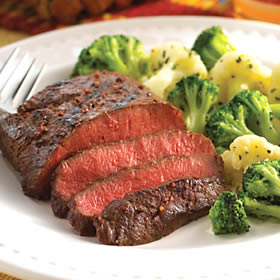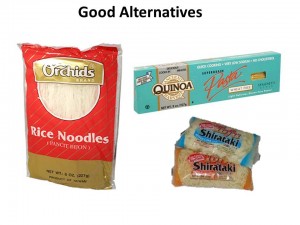There are several reasons that individuals and families decide to switch to a gluten free diet. Some hope to help children suffering with ADHD or autism. Others, like me, are grasping at straws trying to eliminate gut pain and auto-immune diseases. Some people are diagnosed with true celiacs and have no choice. Whatever your reason though, going gluten free might seem a daunting task but it’s really not so bad once you get a handle on it. Read on for 11 tips that I wish I’d known when I first started!
- Switch the whole family at once. I’ve seen many articles about going gluten free and almost all of them discuss how to co-exist with those who eat gluten. I’m not saying you have to completely eliminate gluten from the house in order to be successful but it sure does make things easier! If you do have to keep some glutenous items, make sure they are in a special spot, harder to reach, and labeled really well, at least until you get a good grip on this way of life!
- Get rid of the glutenous condiments and spice packets. This is probably the most important step for a newbie. It is much too easy to accidentally dump something glutenous onto what would have been a gluten free meal. Just get those items out of the house. Give them to a friend. Donate them to a homeless shelter or soup kitchen. Or throw them in the trash! Whatever you have to do to get them out of your kitchen, it will be worth it in the end. Check all the ingredients in all your seasoning packets. If you aren’t sure, google it! Once you figure out that gluten is lurking in all those pre-packaged foods, you’ll start making your own spice blends and become a better cook! Ooo, that would make for a good blog article – how I’ve improved my cooking skills since going gluten free! Honestly, I save money on spices because making your own spice blends is cheaper than buying the pre-packaged crap!

If you have an aggravating family member who isn’t willing to tow the line with you, make sure they have a special place in the fridge for the poison! Yes that’s right, poison! YOU have to treat any gluten like a poison, especially if you have true celiac disease.
- Familiarize yourself with what is gluten free that you already enjoy eating. Spend time googling gluten-free recipes and choose a few easy ones to get you started. A good steak, baked potato, salad, and broccoli are all gluten free! So are many more of your favorite foods! Once you are more aware of where gluten is lurking you will discover that eating gluten free can also mean that you are eating healthier overall.

- Go easy on the gluten free goodies! Many people think that going gluten free will also help them lose weight but honestly, you could easily gain if you get caught up buying gluten free brownie and cookie mixes. I personally prefer a gluten free brownie or cake over a wheat flour based cake! They are light and fluffy, the texture is softer and in my opinion, the flavor of chocolate pulls through rice/tapioca/potato flour better than wheat flour. But that means you can fatten right up on sugar laden products, so careful with those.
- Make better choices. Once you go gluten free, you can “permit” yourself to indulge in cleaner foods that you might have saved for only special occasions. I eat a lot more pickles, peppers, and fresh fruits and vegetables that I used to skip over because I considered them too pricey. Stick with the fresher items on the perimeter of the grocery stores and avoid the heavily packaged foods. I’ve learned that this actually saves me money because I’m eating what’s in season more often.
- Adapt favorite recipes, but realize they might not turn out right the first time. Learn what works best for you and yours. There’s lots of gluten-free alternatives like quinoa noodles and shelf-stable breads that some people don’t mind eating. Others (like me) would rather eat cardboard! Try the alternatives, read labels and find your own substitutes, and have fun with adaptations. For instance, I much prefer rice noodles to quinoa noodles. But rice noodles aren’t even found in the “gluten free” section so how would you know to look? You have to think outside the box, quite literally!

- Going gluten free is a long-term commitment. If you want to be sure that the gluten free diet is working for you, you’ve got to stick it out for more than just a couple of weeks. And you also have to realize that if it isn’t working, it could be simply because you have accidentally been ingesting gluten in places you didn’t think of yet. This is why I recommend that anyone who is truly serious about going gluten free should commit to it for at least 6 months. It really does take awhile to get used to eating truly gluten free.
- Don’t give up. If you make a mistake, don’t use that as an excuse to quit. Just get right back to it with the next bite of food you take! It does get easier, I promise!
- Choose high quality Gluten free bread. The stuff in the typical grocery store on the gf shelf is NASTY! Go to Whole Foods, Kroger, or a health food store and buy gf bread in the freezer section. Sometimes Udis and Rudis can be found fresh but most of the other brands have a horrible gritty texture that I cannot tolerate. My favorite gf bread is Udi’s, hands down. I don’t even bother with the other brands anymore. Gluten free bread costs more, but it’s so worth it. And if you are the only one going gf, then you can freeze the loaves and take out just what you need. Soon I’m going to experiment with gluten free baking so keep your eyes open for those posts!
- Dining out for those who are gluten intolerant is tough, I won’t lie. I do not have celiacs so I’m very fortunate. I can get away with having what I figure is gluten free, and if it’s not, I may pay for it for a couple days but my body recovers quickly. Mexican, chinese, and japanese restaurants are the best places to avoid gluten in foods and work well for me. If you order mexican, make sure your meal is made with corn and not flour tortillas. At chinese and japanese restaurants, stick with rice based meals. You can have rice noodles. Make sure the pancit is made with rice and not semolina. Unfortunately these restaurants probably use a soy/wheat blended “soy sauce” so if you are only gluten intolerant, you might get away with eating at these restaurants. But if you are a true celiac, it’s much harder to eat out.
- Those with true celiacs have to be very careful at restaurants. You’ll have to ask the waiter what’s in the sauce, request that the chef clean the preparation surfaces prior to preparing your meal, and choose menu items that aren’t breaded or fried. You can’t risk sharing the same frying oil so stay away from fried foods. The safest way to be sure you aren’t getting glutened in a restaurant is to order a grilled meat on a salad. Just be sure the salad dressing is gluten free and that the seasoning used on the meat isn’t contaminated. Honestly, if you have been diagnosed with celiac disease, I suggest avoiding eating foods prepared somewhere else for a few months until you have a true handle on the disease and what you are eating. I don’t say this to scare you, but to inform you.
There are lots of tips and tricks out there for gluten free living but honestly, you will develop your own as you go. The best way to get started is to start with preparing your own foods for a bit and getting used to what you can and cannot eat. Once you have a handle on it, going out to eat



